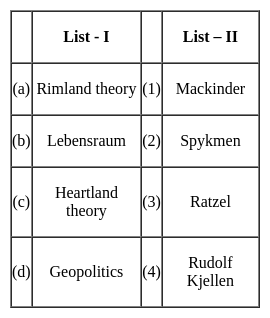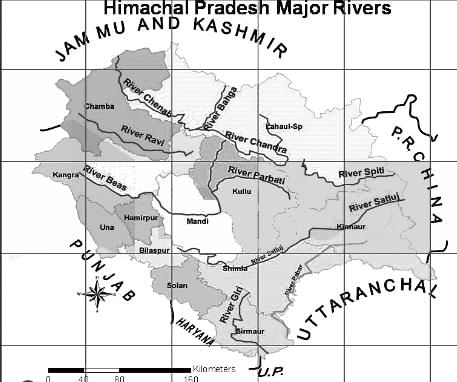MH SET Paper 2 Mock Test - 10 (Geography) - MAHA TET MCQ
30 Questions MCQ Test MH SET Mock Test Series 2025 - MH SET Paper 2 Mock Test - 10 (Geography)
Considering the insolation received in 100, which of the following statements is/are correct regarding the heat budget of the Earth?
1. Around 35 units are reflected back before reaching the surface of the Earth.
2. 65 units are absorbed by the atmosphere and the Earth’s surface.
3. The earth radiates back 51 units as terrestrial radiation.
Select the correct answer from the options given below.
According to the Central Place Theory, the Transport Principle can express as
Through which state do the rivers Chenab, Ravi, Beas, Sutlej and Yamuna flow?
Given below are two statements, one labelled as assertion(A) and other labelled as reason(R).
Assertion(A)- Aerial photographs are more useful when spatial detail is more critical than spectral information.
Reason(R)- Aerial photograph’s spectral resolution is generally coarse.
Assertion (A)- All living things have intrinsic value.
Reason (R) - Diversity of life forms contribute to the realization of these values .
Given below are two statements. One is labelled as Assertion (A) and the other is labelled as Reason (R).
Assertion(A) : Unsupervised Classification normally requires only a minimal amount of input from the analyst.Reason(R) : A priori knowledge of the scene or training sites are required to run this classification.
Select the correct answer from options given below :
Consider the following statements about coral reefs and choose the correct option:
(A) Corals are skeletons of large marine animals.
(B) Coral reefs play an important role in protecting the coastline from erosion.
(C) When the living polyps die, their skeletons are left and collection of these skeletons form coral island.
a) Society is a mosaic of various modes of social processes and interactions.
b) Industrialization has always been a positive force in modernizing the society.
c) Competition as a social process has always been an universal action.
d) Accommodation goes hand in hand with cooperation and conflict.
Which of the following options are correct?
Consider the following pairs:

Which of the pairs given above are correct?
Which port was developed as a satellite port of Mumbai Port?
Which among the following state produces maximum raw silk in India?
Which of the following is the cause of tides?
A. Moon's gravitational pull
B. Sun's gravitational pull
C. Centrifugal force
D. Gravitational pull of Earth
Select the answer from the codes given below :
The difference between maximum and minimum temperature of the day is called …………..
When does most of the rainfall occur over a large part of the Indian region?
Assertion(A)- According to Anthony Giddens human agency and social structure are not two separate concepts.
Reason(R)- Structure is a continuous process which is carried out in a flow.
Select the correct answer from options given below:
Match the concepts (List - I) with their proponents (List - II) selecting correct answer from the codes given below :

|
60 tests
|




















